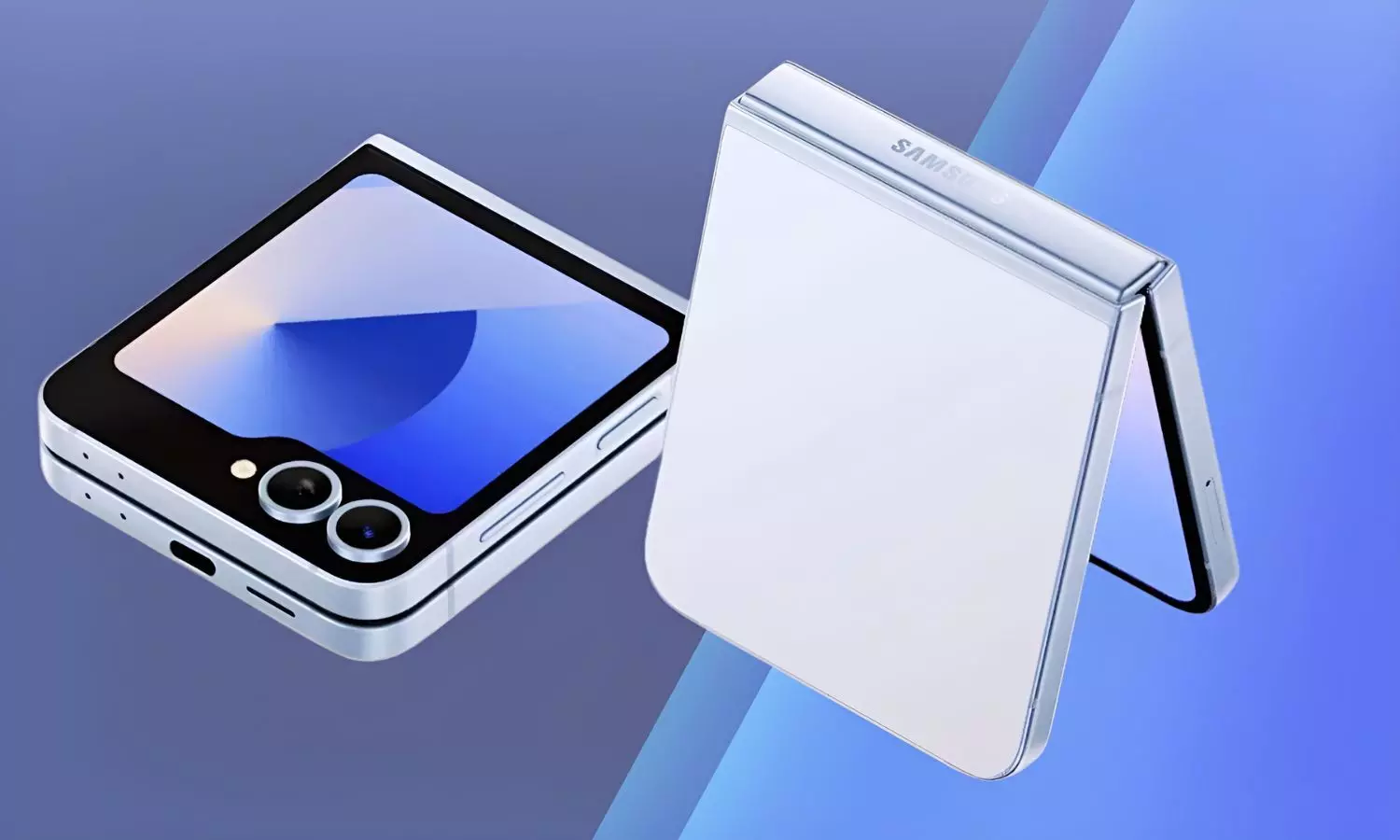Samsung Galaxy Z Flip 7 vs Motorola Razr 60 Ultra: Which Flip Phone Wins?
Galaxy Z Flip 7 vs Razr 60 Ultra: Samsung’s new flip phone brings better display, hinge, and battery. See full feature comparison and pricing.
image for illustrative purpose

Samsung has officially introduced its Galaxy Z Flip 7, the latest iteration in its foldable lineup, alongside the Galaxy Z Fold 7 and a new Fan Edition (FE). As the flip and fold smartphone segment expands, Samsung continues to hold its lead, while contending with emerging rivals like Motorola and Vivo.
The Galaxy Z Flip 7 debuts with incremental design improvements, most notably a slimmer profile at 13.7mm when closed, due to a redesigned Armor FlexHinge. Samsung’s use of Gorilla Glass Victus 2 on both sides and an Armor Aluminum frame adds to its durability. The updated hinge structure enhances the folding mechanism and overall stability.
The outer 4.1-inch FlexWindow now spans edge-to-edge, offering a more usable secondary display. This year’s model includes an IP48 rating for added dust protection, an upgrade from the Flip 6’s IPX8. The phone weighs 188 grams, with button placements unchanged—volume and power on the right, USB-C and speaker grilles at the bottom.
The main 6.9-inch Dynamic AMOLED 2X display continues to support a 120Hz adaptive refresh rate. Samsung has refined the hinge to minimize the crease, making it less noticeable both visually and physically. The FlexWindow is now more functional, with 2,600 nits of peak brightness and high refresh rate support, rivaling the usability of Motorola’s external display.
Out of the box, the Galaxy Z Flip 7 ships with One UI 8 built on Android 16. It incorporates Samsung’s Galaxy AI suite, featuring tools like Gemini Live, which works directly from the cover display for tasks such as searches, reminders, and recommendations. New features like Now Bar and Now Brief push real-time and personalized content to the FlexWindow, improving user engagement without needing to open the phone.
A notable shift comes with the adoption of Samsung’s in-house Exynos 2500 processor, paired with 12GB RAM and 256GB storage. The Flip 7 delivers stable daily performance across apps and multitasking, though its benchmark scores (Geekbench single-core: 1641; multi-core: 7725; GPU: 18663) indicate it isn’t designed for peak performance. Gaming titles like BGMI and Call of Duty Mobile run smoothly, but extended usage leads to minor heating.
The Galaxy Z Flip 7 features a dual rear camera setup—50MP wide and 12MP ultrawide. Daylight performance is sharp, with good color balance and dynamic range. However, low-light output remains a challenge, with some grain and softness despite AI-based enhancements. The 10MP selfie camera benefits from AI tuning, and the FlexWindow continues to be useful for self-portraits.
Equipped with a 4,300mAh battery, the Flip 7 offers all-day battery life, an upgrade over its predecessor’s 3,700mAh cell. Users can expect around 6 hours of screen time. Charging via the 25W fast charger takes the device to 50 per cent in approximately 30 minutes. Wireless charging and reverse charging (PowerShare) remain part of the package, though Motorola still leads in charging speed.
The Samsung Galaxy Z Flip 7 starts at Rs 1,09,999 in India. It is available through major online and offline retailers. The company also launched the Galaxy Z Fold 7 and Galaxy FE as part of its 2025 foldable lineup.
Samsung continues to refine its foldable smartphone offerings with the Galaxy Z Flip 7. While it shows progress in design, software integration, and battery capacity, the night camera performance remains an area for improvement. Against competitors like Motorola’s Razr 60 Ultra, Samsung holds a clear lead in display quality and AI integration.

